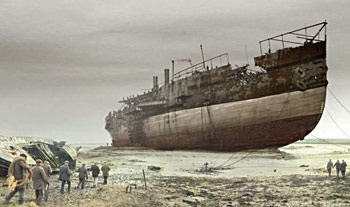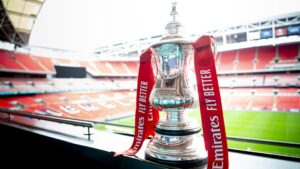The SS Great Eastern, originally known as the Leviathan, was the largest ship ever built at the time of her 1858 launch. It was such a spectacle that people paid just to walk around it. However, it was plagued by bad luck from the outset. With deaths reported during her construction she even initially had failed to launch in front of 3000 expectant people. Finally berthed three months late she then suffered damage on her maiden voyage due to the explosion of one of its funnels. After extensive repairs she was deployed for a few years as a passenger liner and had the capacity to carry 4,000 passengers. Ship designer Isambard Kingdom Brunel knew her affectionately as the “Great Babe” but sadly died shortly after her maiden voyage

The ship struggled to find enough passengers on either the Australian or American routes and consequently the company liquidated. The ship was put up for sale in 1864 but with no one willing to purchase such a large vessel she was chartered to the Telegraph Construction Company, for the purpose of laying the first transatlantic telegraph cable.
Hibernia Atlantic on Southport Business Park is today an undersea cable landing station and is a stone’s throw from the site of the old Scarisbrick New Road ground which became Southport Central’s home in 1889.
Finishing her life as a floating music hall and advertisement hoarding for Lewis’s department store, the ship was eventually put in the hands of the breakers in 1889.

When Southport Olympic Rugby club stopped playing at their home on Scarisbrick New Road, Central saw the opportunity to move away from the Athletic Sports Ground on Sussex Road to their own a purpose-built football field. The Ordnance Survey map produced in 1894 indicates the location of an enclosure to be roughly where Falkland Road and Rutland Road stand today.
The Southport Visiter stated that the field was “sufficiently extensive, thoroughly well laid out, capitally fenced and included two excellent pavillions and a covered grandstand”.
Southport Central chairman Isaac Smith could be thanked for the existence of the grandstand having purchased pitch pine logs, once part of the SS Great Eastern from Mr Birch, secretary to the Lancashire Agricultural Society who held its annual show in Southport. These logs were then used as the pillars and stays of the grandstand and a great deal of the railings around the ground.
The owners of Everton FC, who were then the custodians of Anfield, where Liverpool FC play today purchased one of the ship’s masts and placed it close to the Kop end at Anfield.
In due course the grandstand was dismantled at Scarisbrick New Road and taken across to Ash Lane and re-erected there in 1905. The stand, although extended several times, remained in place until fire destroyed it in 1966.
Discover more from Southport Central
Subscribe to get the latest posts sent to your email.

 2 - 1 v Oxford City (A) 18/10/2025
2 - 1 v Oxford City (A) 18/10/2025 




More Stories
The Price Of Saying No
Friday Night Football
Fifty Years On: Counting the Cash, Missing the Moment